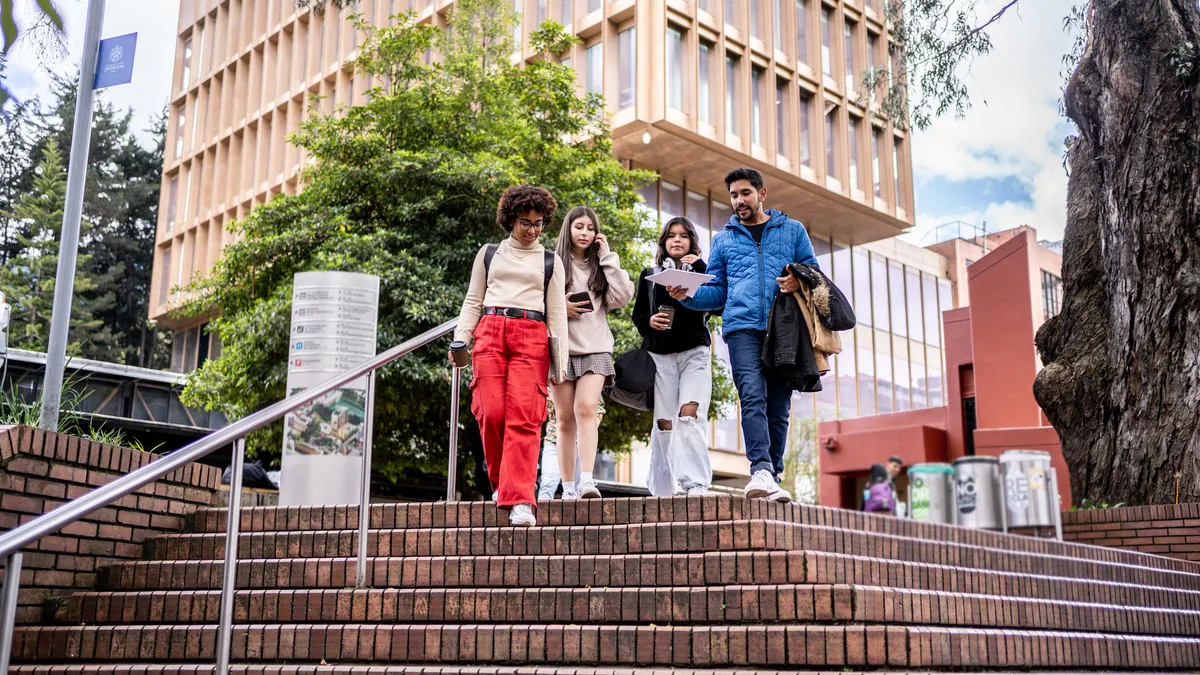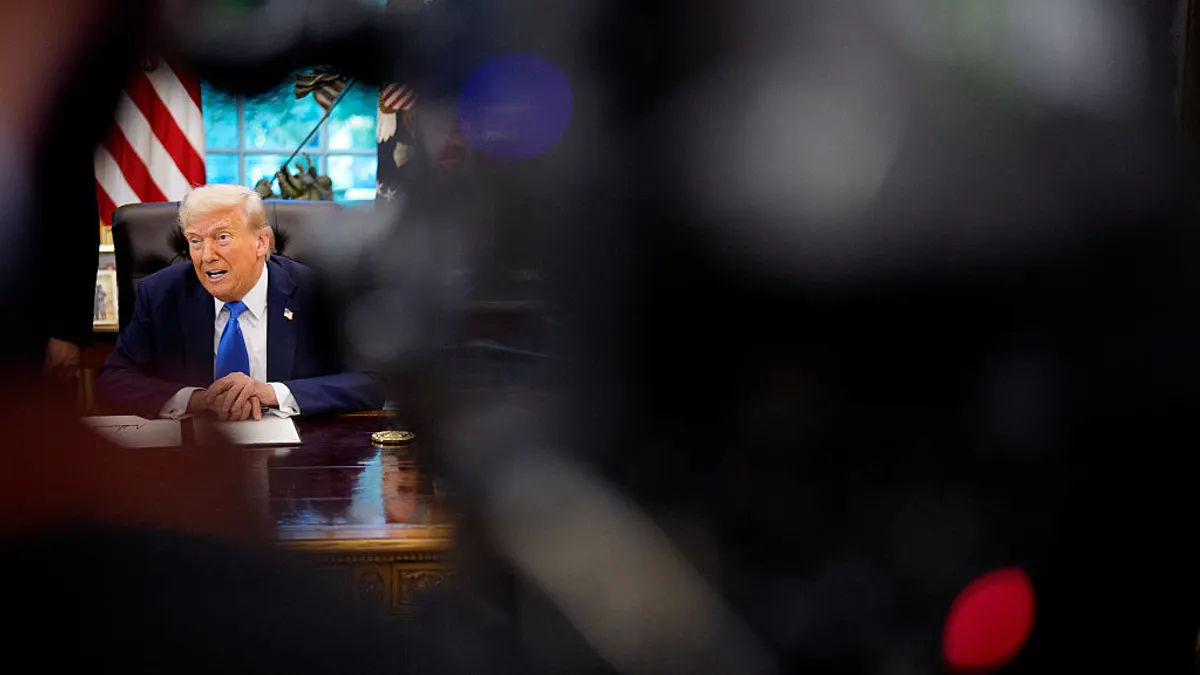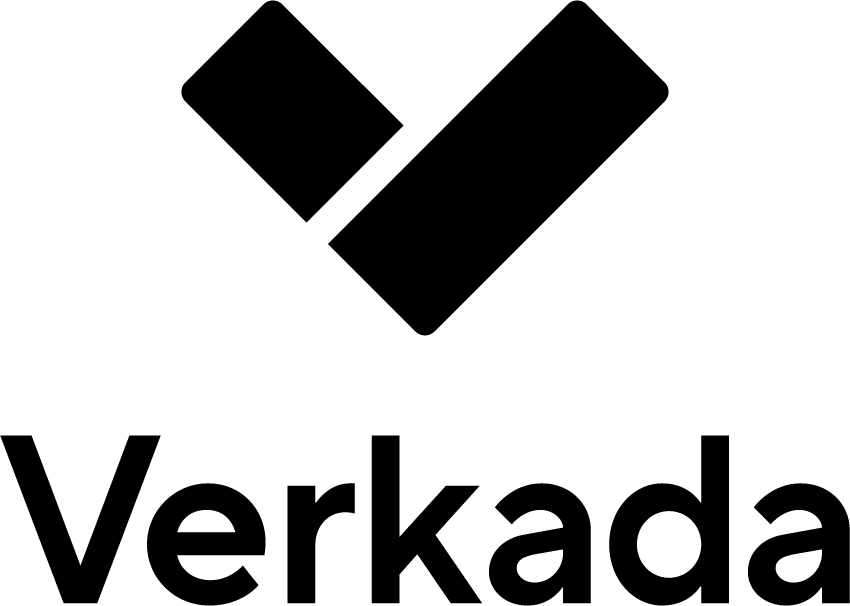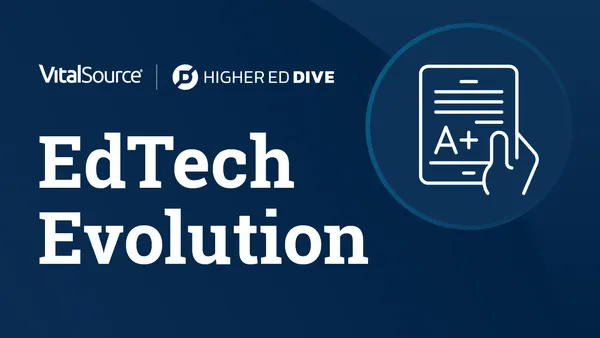What does it mean for a university to create a massive open online course (MOOC)? That's what Ira Gooding, Educational Resource Coordinator at Johns Hopkins Bloomberg School of Public Health's Center for Teaching and Learning, and Brian Klaas, Senior Web Systems Designer at the Johns Hopkins Bloomberg School of Public Health's Center for Teaching and Learning with Technology, spoke about at the UBTech conference in Orlando, Fla.
On Tuesday, Education Dive attended the higher education technology conference, where Gooding and Klaas opened up about their experiences helping Johns Hopkins create a MOOC for Coursera. Here's what they had to say:
LOW COMPLETION STATS ARE MISLEADING
- Low completion numbers are skewed by massive enrollment numbers.
- Low completion numbers are also skewed by the conventional understanding of what a higher education class is.
- MOOC students have their own personal objectives, which may not involve earning the statement of accomplishment, and exit surveys indicate many are accomplishing those objectives (e.g., professional development, personal pursuits, etc.).
- “Students in MOOCs are there to learn… that should be a refreshing note for us.”
MOOCS ALONE CAN'T SOLVE THE TUITION CRISIS
- MOOCs are great for general learning, but can’t be substituted for higher-level or seminar-style courses.
- Diversity is a virtue. When everyone’s offering the same course, differentiation is crucial (e.g., higher level courses, faculty expertise, etc.).
- Proposed revenue models don’t really bring in a lot of money--no one is really making money at this right now.
- Right now all major players who give away their content/services for free online are ad-based (e.g., Google, Facebook, etc.), but that isn't a good model for education.
- MOOCs should be important to universities because “people need a way to stay current and relevant regardless of what their job is.”
-
Converting even just a few students into matriculated degree-seeking students can cover the cost.

Live polling at the Johns Hopkins Coursera session.
WHY MOOCS ARE INEXPENSIVE
- You don’t need fancy video studios to create a MOOC.
- Most universities already have the infrastructure needed to create MOOCs.
- Students don't care if you sacrifice a little video production value as long as the instructor engages them.
- No downside to more cost-effective approach with video, but audio matters in a huge way.
- Poor video quality is ok, but students will tune out if there are audio issues.
- “If you’re going to invest somewhere, invest in audio.”
WHY MOOCS ARE EXPENSIVE
- Writing good assessments takes time; it can't be done well at the last minute.
- Expect 10 hours of work to produce a good rubric
- Faculty can't do it alone; administrative and technical support are essential.
- Faculty should focus on creating great content while someone else handles all the technical and administrative stuff.
-
“Faculty are subject matter experts, not technicians.”
Would you like to see more education news like this in your inbox on a daily basis? Subscribe to our Education Dive email newsletter! You may also want to read Education Dive's look at the 8 questions MOOCs face in 2013.












